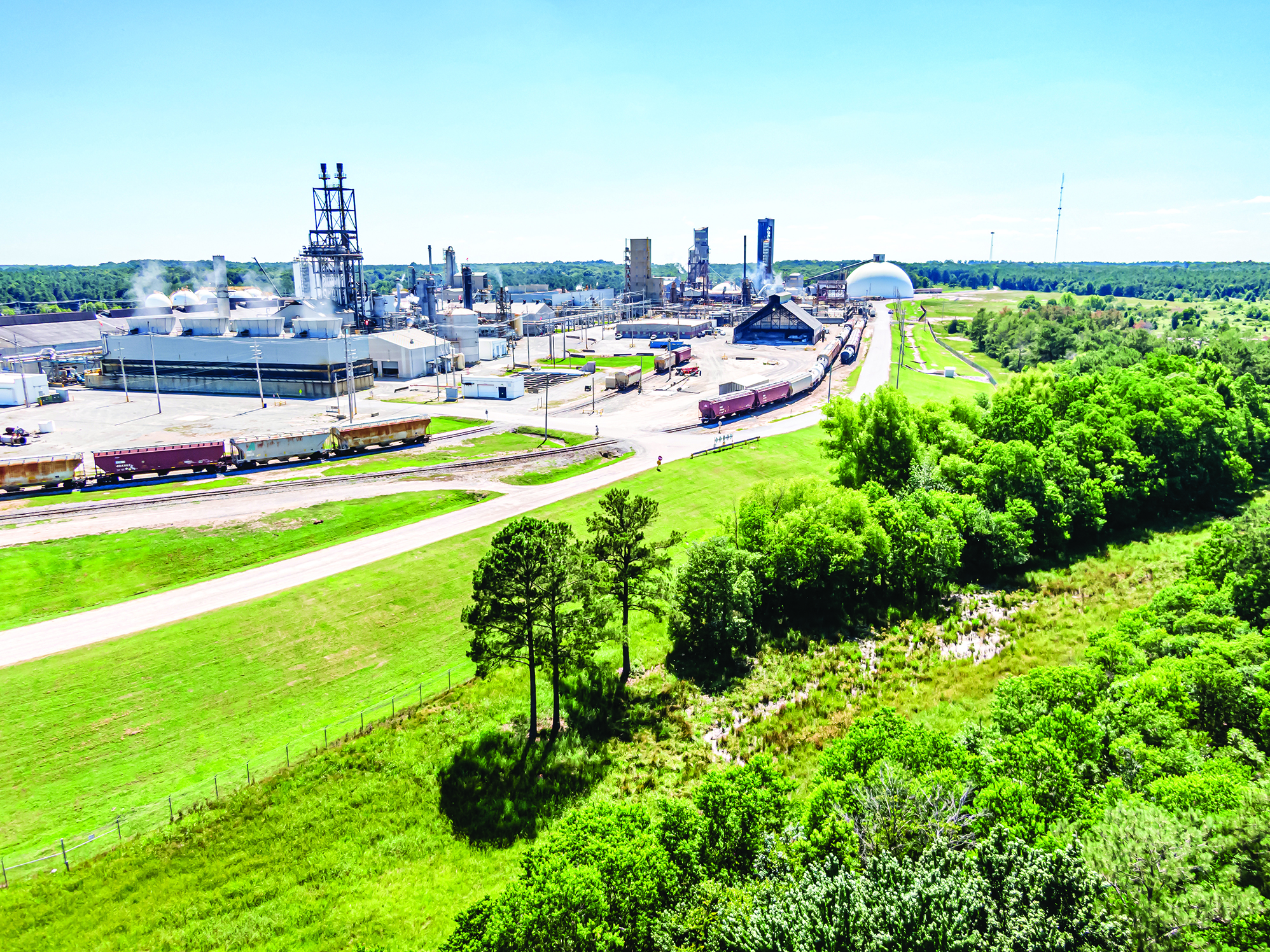
What Is The El Dorado Carbon Capture & Storage Project?
LSB Industries and Lapis Energy are developing a project that will capture and sequester CO2 that is currently produced as a by-product of LSB’s ammonia production at its El Dorado, Arkansas facility. The CO2 will be injected into deep geological formations largely located under LSB’s existing 1,400-acre plant site.
The El Dorado project is the first carbon capture and storage (“CCS”) project in the state of Arkansas, and only the third project of its kind in the United States, putting LSB-El Dorado at the forefront of low carbon or blue ammonia production. This project is important for LSB from both environmental and commercial perspectives. CCS is a proven means of reducing greenhouse gas emissions from ammonia production. LSB’s customers also need solutions to help them decarbonize their supply chains.
The project will allow LSB to become one of the first suppliers of blue ammonia to the international markets and will enable the company to reduce its scope 1 Greenhouse Gas (GHG) emissions by 25%. This will be equivalent to removing approximately 109,000 passenger cars from the road, which represents approximately 11% of the cars registered in Arkansas.
How Is CO2 Captured And Stored, And Is It Safe?
The capture and sequestration of CO2 – a by-product of ammonia produced by the LSB-El Dorado facility – will remove this greenhouse gas from the atmosphere. This project will capture the CO2 from the plant, condition it to remove any water or other impurities, compress the CO2 into a liquid and inject it into deep saline reservoirs more than a mile below the plant site. Thick sealing intervals of shale occur above the injection zones to ensure that the CO2 remains as a trapped in situ fluid. All surface work involved will be on the LSB-El Dorado facility site, though the reservoirs deep underground may, by their nature, be somewhat larger than the plant footprint.
Carbon Capture and Sequestration Facility
The captured CO2 will be injected into rocks thousands of feet below the United States Drinking Water (USDW) supply, and below a 1,000-foot thick, impermeable layer of shale. These rocks held oil and gas deposits for millions of years, without contaminating the USDW, because of the effectiveness of the shale layer. In the same way, this layer will prevent any CO2 from migrating into the USDW.
Subsurface Profile Under The LSB-EL Dorado Facility
- The reservoirs holding the CO2, the Hosston and the Cotton Valley, are approximately 3,500-6,500 ft below the surface and 3,000 ft below the local drinking water supply.
- A 1,000 ft thick, impermeable layer of shale separates the injection zone and the area drinking water, preventing any upward migration of CO2.
- CO2 injection pressures will be carefully monitored by the monitoring wells installed to further ensure integrity.
- Increasing the number of possible injection zones will reduce the plume size significantly, and thus the need for private pore space rights.
A stringent set of safety requirements will need to be satisfied before the U.S. Environmental Protection Agency (EPA) will grant permission to start CO2 injections. Extensive safety monitoring will also take place during operations, to detect any problems as soon as they occur so that they can be remediated.
Press Releases & Presentations

